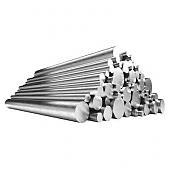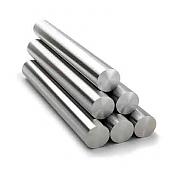High Temperature Alloys

High temperature alloys are crucial materials designed to withstand extreme temperatures ranging from 760°C to 1500°C while maintaining exceptional mechanical properties. These alloys exhibit remarkable high-temperature strength, oxidation resistance, thermal corrosion resistance, fatigue properties, and fracture toughness, making them indispensable for critical components in gas turbine engines used in both military and civilian applications.
Classification of High Temperature Alloys:
Based on Operating Temperature:
760°C High-Temperature Materials: These alloys are designed to operate efficiently at temperatures up to 760°C.
1200°C High-Temperature Materials: Suitable for even higher temperatures, up to 1200°C.
1500°C High-Temperature Materials: Capable of enduring temperatures as high as 1500°C while maintaining a tensile strength of 800 MPa.
Based on Matrix Elements:
Iron-Based Alloys: Utilize iron as the primary matrix element.
Nickel-Based Superalloys: Employ nickel as the primary base, offering exceptional high-temperature performance.
Cobalt-Based Superalloys: Feature cobalt as the primary constituent, renowned for their strength and resistance to corrosion.
Based on Manufacturing Process:
Deformation High-Temperature Alloys: Formed through hot or cold working processes.
Casting High-Temperature Alloys: Produced by casting methods, suitable for complex shapes.
Powder Metallurgy Superalloys: Manufactured using powder metallurgy techniques, offering unique microstructures and properties.
Based on Strengthening Mechanisms:
Solid Solution Strengthening: Enhances strength by dissolving alloying elements into the base metal.
Precipitation Strengthening: Forms strengthening precipitates within the alloy matrix.
Oxide Dispersion Strengthening (ODS): Disperses oxide particles throughout the alloy to improve strength and high-temperature performance.
Fiber Reinforced: Incorporates reinforcing fibers to enhance mechanical properties.
Applications of High Temperature Alloys:
High temperature alloys are primarily used in the production of high-temperature components for aviation, naval vessels, and industrial gas turbines, including turbine blades, guide vanes, turbine discs, high-pressure compressor plates, and combustors. They also find applications in energy conversion devices for aerospace aircraft, rocket engines, nuclear reactors, petrochemical equipment, and coal conversion processes.
Development Trends:
The future of high temperature alloys focuses on enhancing their operating temperatures, improving load-bearing capabilities at medium to high temperatures, and extending their service lives. Key developments include:
Single Crystal Blades: Single crystal turbine blades are entering practical use, offering superior performance over conventional polycrystalline blades.
Directionally Solidified Blades: Improving the comprehensive performance of directionally solidified blades to meet evolving requirements.
Multilayer Diffusion Bonding: Using chilled alloy powder to manufacture hollow blades through multilayer diffusion bonding, enhancing their ability to withstand higher gas temperatures.
Oxide Dispersion Strengthened Alloys: Developing alloys with intensified oxide dispersion to increase operating temperatures for guide vanes and combustion chambers.
Protective Coatings: Advancing protective coating materials and technologies to improve the alloys' corrosion and wear resistance.
These advancements will continue to push the boundaries of high temperature alloy technology, enabling the development of more efficient and reliable gas turbine engines for a wide range of applications.
Related Products
Contact Us


